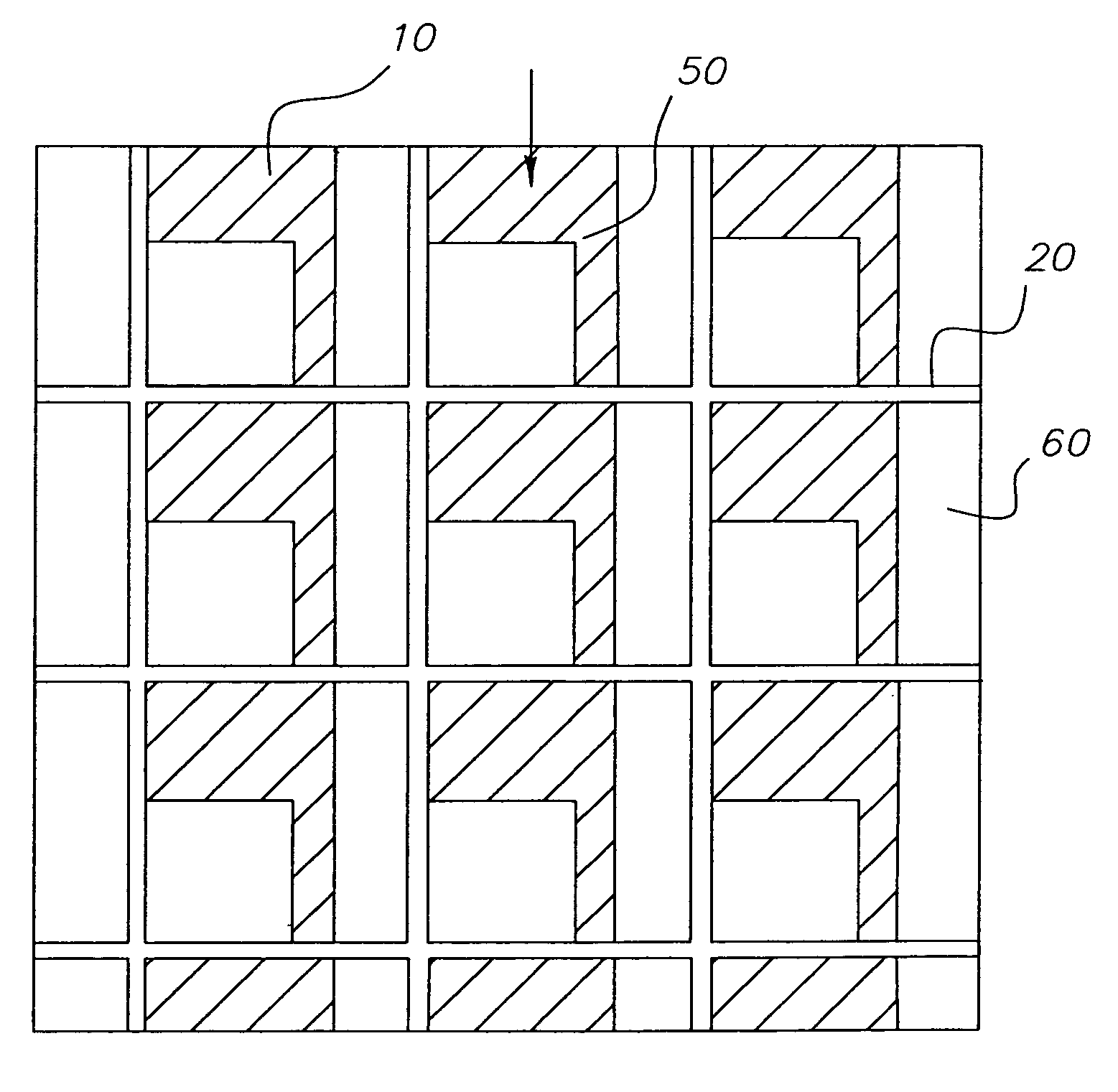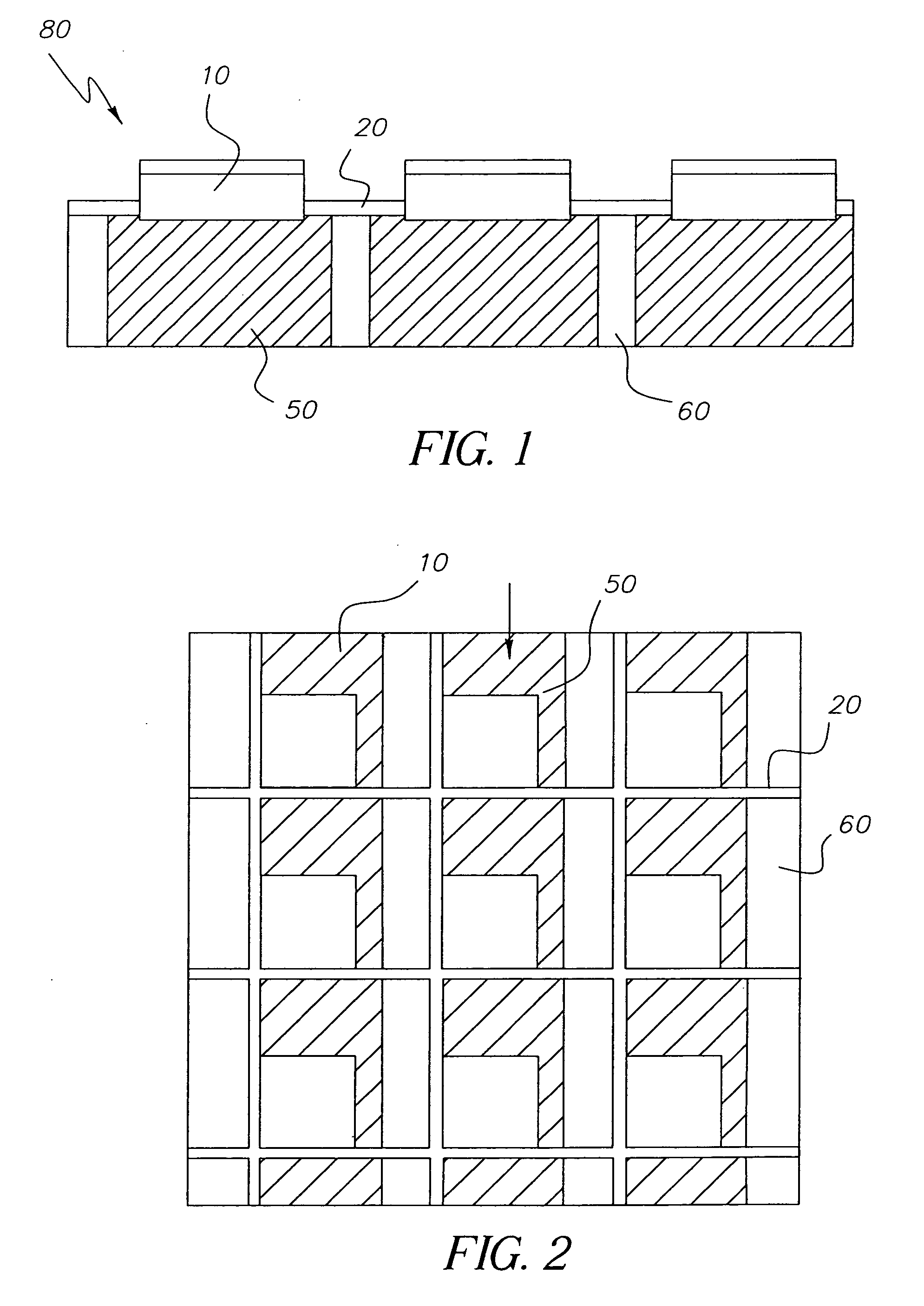Display device with improved flexibility
a technology of flexible display and display screen, which is applied in the field of flexible display screen, can solve the problems of changing the thickness of the crystal layer, the natural flexibility of the plastic substrate is not suitable, and the display utilizing glass substrates is less suitable, so as to improve flexibility and ensure the integrity of the pixels. the effect of easy manufacturing
- Summary
- Abstract
- Description
- Claims
- Application Information
AI Technical Summary
Benefits of technology
Problems solved by technology
Method used
Image
Examples
example 1
[0106] The comparative sample A in Table 1 is the prior art with no substrate area 50 (that is, the substrate area 60 covers the whole area of the substrate). Referring to Eqn. (6), the maximum strain, εmax, of the layers in the display is equal to ymaxρ,
[0107] where ρ is the bending radius of curvature and ymax is the distance from the center of the beam to the layer of concern. If the maximum strain on display module 10 is required to be less than 1%, we have, εmax=1%, and ymax=1 mm. Therefore, we have, from Eqn (6), ρ=100 mm, which, is the minimum bending radius of curvature for comparative sample A without rendering the display inoperable. Examples 1 to 4 represent displays of this invention that yield improvement of flexibility. The flexibility is measured in terms of the minimum radius of curvature of the substrate area 50 the display can be bent into without rendering inoperable. As shown in Table 1, the minimum radius of curvature of the display can be reduced by incorporat...
example 2
[0108] For the embodiment shown in FIG. 6, the improvement of flexibility can be shown in terms of the minimum radius of curvature of display in bending without rendering the display inoperable. Note that the pixel area 10 is reinforced by support reinforcement 70 and is therefore stiffer than the between-pixel area. The minimum radius of curvature of the display is defined by the radius of the curvature in the between-pixel area.
[0109] Similar to Example 1, the deformation in the display module 10 is required to be less than 1%, which yields a minimum bending radius of curvature for comparative sample B to be 100 mm. For the pixel area in FIG. 6, since there are two material layers, i.e., support 90 and support reinforcement 70, we utilize the approach outlined in “Analysis and Performance of Fiber Composites” (B. D Agarwal and L. J. Broutman, 2nd Edition, John Wiley & Sons, Inc., New York, 1990) for our calculations. We determine the radius of curvature of the between-pixel area ...
PUM
| Property | Measurement | Unit |
|---|---|---|
| Young's moduli | aaaaa | aaaaa |
| Young's moduli | aaaaa | aaaaa |
| glass transition temperature | aaaaa | aaaaa |
Abstract
Description
Claims
Application Information
 Login to View More
Login to View More - R&D
- Intellectual Property
- Life Sciences
- Materials
- Tech Scout
- Unparalleled Data Quality
- Higher Quality Content
- 60% Fewer Hallucinations
Browse by: Latest US Patents, China's latest patents, Technical Efficacy Thesaurus, Application Domain, Technology Topic, Popular Technical Reports.
© 2025 PatSnap. All rights reserved.Legal|Privacy policy|Modern Slavery Act Transparency Statement|Sitemap|About US| Contact US: help@patsnap.com



